Wired this week posted a very cool photo series of glacier views from space. Like this one:

Wired this week posted a very cool photo series of glacier views from space. Like this one:

…in Scrabble. How to win (and possibly lose friends, or at least make them want to never play with you again):
Curious, the first word I played in an iPhone Scrabble game I started yesterday with a friend was “DIRTY” for 26 points. And then he played a ‘Q’ on my ‘I’ for 21 points. Hah.
(Nod: The Daily Dish)
Need an iPhone case but are a bit short on cash? iPhone case maker Case-Mate has a solution: the iPhone 3G / 3GS Recession Case.
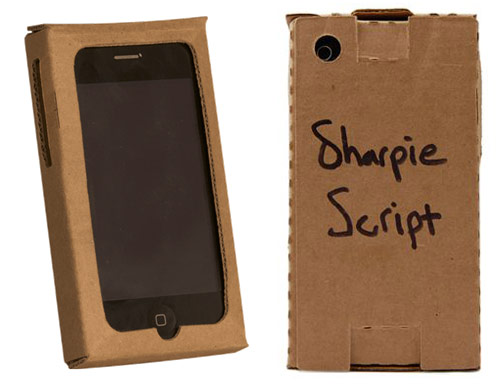
It’s made of cardboard, costs 99 ¢, and Case-Mate offers free shipping:
Tough times call for tough cases and that’s where the recession case comes in! The recession case lets you keep cash in your pocket without sacrificing on unique design for your beloved iPhone!
And if you need an iPhone dock, you can make one for virtually-free! Out of paper, too!
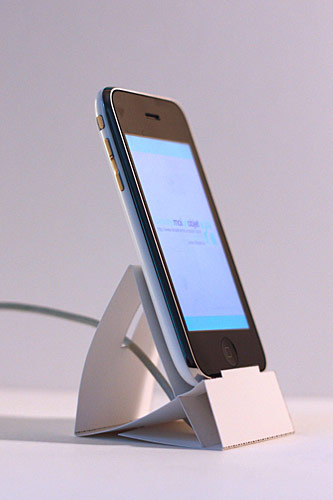
Just print-out the template and follow the instructions!
(Nod: What’s on iPhone and The Dieline, respectively)
I wrote back in April about the then-recently-redesigned Wheat Thins logo and packaging. While I was doing my shopping today, I noticed this new packaging:

Curious, as they just redesigned their logo and packaging not too long ago. Here’s the now-old packaging on the left with the new-new packaging on the right:

And here’s the then-old and then-new (but now-old) packaging I saw in April:


At least at my store, only the original and original reduced fat Wheat Thins have the new-new packaging, but according to the Wheat Thins website, all varieties are being re-branded. As with the last redesign, I couldn’t find any press release or any other information on the redesign.

The new logo tosses the wheat icon that survived this year’s earlier redesign, and the text is decidedly more flamboyant than before. Coupled with the logo, the exploding cracker with the various food items bursting from it definitely thrusts the energy level of the packaging to a new level.
So this year’s earlier redesign cleaned-up the logo and packaging, giving the brand a much-needed face-lift. Now this redesign injects a sassy, energetic attitude into the packaging.
I liked the earlier redesign. I like this one even better. Excellent work, but curious why it happened.
Adjectives used at the recent Apple Music Event:
I learned this week from the website OpenCongress a federal lawsuit was filed charging the method used to apportion seats in the U.S. House of Representatives effectively disenfranchises voters in smaller-population states. OpenCongress cites a New York Times article by Peter Baker. From the NYT:
In theory, every member of the House represents roughly the same number of people. But because each state gets at least one seat, no matter how small its population, and because the overall size of the House has not changed in a century, the number of people represented by a single congressman can vary widely.
The most populous district in America right now, according to the latest Census data, is Nevada’s 3rd District, where 960,000 people are represented in the House by just one member. All of Montana’s 958,000 people likewise have just one vote in the House. By contrast, 523,000 in Wyoming get the same voting power, as do the 527,000 in one of Rhode Island’s two districts and the 531,000 in the other.
That 400,000-person disparity between top and bottom has generated a federal court challenge that is set to be filed Thursday in Mississippi, charging that the system effectively disenfranchises people in certain states. The lawsuit asks the courts to order the House to fix the problem by increasing its size from 435 seats to at least 932, or perhaps as many as 1,761. That way, the plaintiffs argue, every state can have districts that are close to parity.
Baker cites the historical background of the current House situation:
The issue traces back to the founding of the country. The Constitution stipulated that every 10 years, the House should be reapportioned so that each state had at lease one representative and that no Congressional district contained fewer than 30,000 people. But it was left to Congress to decide how many total House seats there should be.
The original House had 65 representatives, one for every 33,000 people. As the country’s population grew over the next century, so did the size of the House, until it reached 435 in 1911, when each member at that time representing an average of 212,000 people.
But Congress refused to reapportion after the 1920 Census, as a wave of immigration threatened to shift voting power from the South and Midwest to the urban Northeast. Eventually, Congress voted to keep the House at 435 seats regardless of rising population. Except for a brief period when it enlarged to 437 because Alaska and Hawaii had joined the union with one seat each, the House has remained at 435 ever since.
This is certainly an interesting idea. Imagine your Congressperson having a more intimate knowledge of your district and your needs while being part of a more equitable system.
But the first thing I thought of when I was reading this story was not the future implications on our democracy if the House was expanded to double its current size. The first thing I thought of was where do you put all these new representatives? Surely an addition on the House or, gasp, a new building would be necessary, no? Will the House turn into the Galactic Senate from Star Wars?
I’ve been lax lately on continuing my “Tales from myPhone” series where I document situations where my iPhone (myPhone) has proven very useful. So to jump-start the series, here’s Episode 4.
Over the Labor Day weekend, I was in New York City (photos forthcoming) with some friends from graduate school. One of the mornings, we were walking around, and I said, “I wonder where the United Nations building is.” One of my friends said, “Ooo yeah!” so I launched the Maps app and searched. As you can see below, we actually weren’t that far away and were headed in that direction anyway. Had we just kept walking east on 42nd Street, we would have eventually ran right into it.

From and back to Connecticut, I took the Metro-North train to NYC. On my return day, I wanted to make sure I knew when a train left Grand Central, so I checked the PDF schedule on the Metro-North website. Because I’m not aware of a method on myPhone to save a PDF file from a website, I took a screenshot of the schedule, thus giving me the ability to check the schedule in myPhone’s camera roll instead of having to reload the website and PDF every time.

Finally, myPhone came in service when I had no service: on the subway. There are two free NYC subway apps which are just simple, scrollable maps of the subway system but are much better than pulling out a folded, paper hey-I’m-a-tourist map (although the camera around my neck took care of that one).


One thing I love to do with my Mac is change the icons from the folder icons to the device icons to the application icons. I especially love when I can update my icons with a unified look.
This week, icon powerhouse The Iconfactory released a new, massive set of free iPhone-inspired icons and extras designed by Louie Mantia and David Lanham. The icons are outstanding and look great on my Mac, giving my system icons and my application icons a terrific, unified look. Here are a few of my favorites:
 In the top row are the icons for iTunes, Pages, and the system folder; in the bottom row are the icons for GarageBand, Mail, and the music folder.
In the top row are the icons for iTunes, Pages, and the system folder; in the bottom row are the icons for GarageBand, Mail, and the music folder.
Just as the default Snow Leopard icons are painstakingly created with amazing detail, so too are the Flurry icons. Again, the iTunes icon:

Address Book icon:

Pages icon:

Public folder icon:

Music folder icon:

Trash icon:
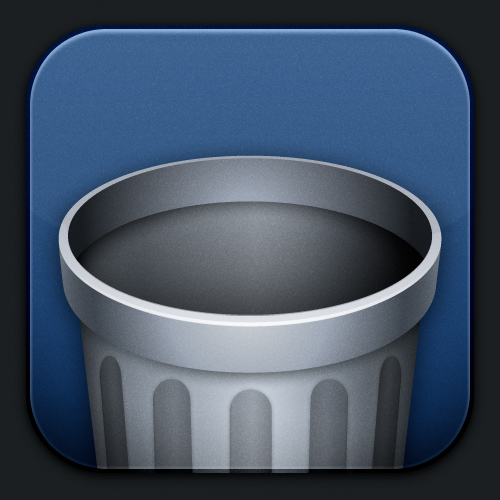
GarageBand icon:

System folder icon:

They even managed to make a System Preferences icon that is better than the iPhone Settings icon:

Overall, the Flurry icon set is outstanding. Well done, Louie Mantia and David Lanham!
When I do my grocery shopping, I usually walk up and down every aisle in the store 1) because walking around is enjoyable and 2) because I’m always on the lookout for new packaging design.
Well this week when I was at the store, I was walking down the personal care products aisle and had to do a double-take at the shampoo bottles. At first, I thought the Pert shampoo was redesigned, but upon closer inspection, I discovered the bottle I was looking at was a Pert-Plus-look-alike. The bottle was the generic Stop & Shop brand CareOne designed to look nearly identical to the national brand.

Curious, I only saw these types of look-alikes in the shampoo section. Here are the others:

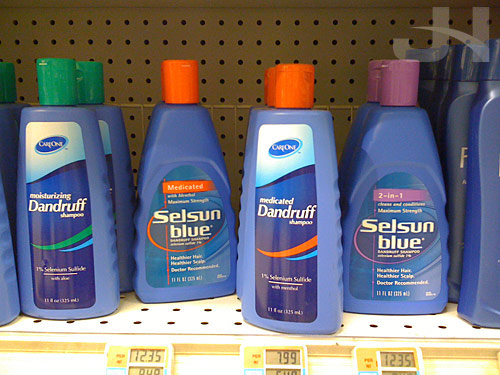
Back in January, I discovered via the then-just-redesigned White House website what I thought to be my dream job: White House Director of New Media. I wrote this:
If there ever were a perfect job for me, I’m fairly certain White House Director of New Media would be it. Where else beside the Obama White House could I marry my love of politics with my skills and awareness of technology while serving passionately for the greater good?
Well, I think I found a job that I would enjoy even more: the official White House photographer. I’m not a professional photographer by any means, but I love taking pictures as you’ve undoubtedly been aware from my road-trip posts. This job has so many pluses. Working at the White House? Check. Taking photos all day? Check. Being privileged to experience the inner-workings of the presidency? Check. Traveling the country and the world with the president? Check.
Maybe they can make a hybrid position for me. :-)
Anyway, I recently discovered the “Official White House Photostream” on Flickr. Seeing what these photographers capture makes me want their job. From the first 30 (of 68) pages, here are a few of my favorites:

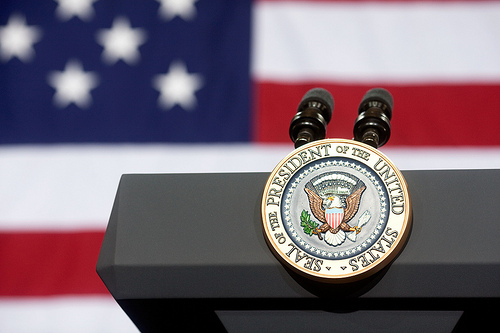
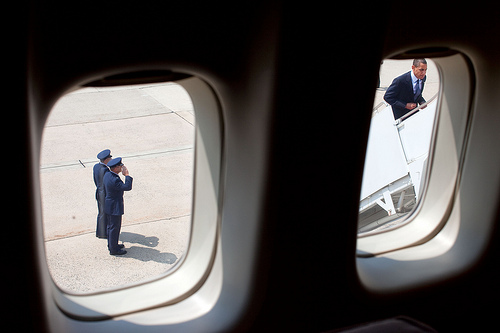


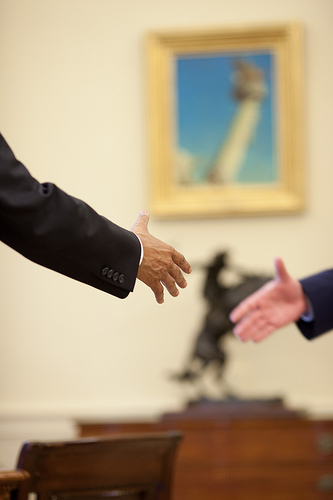
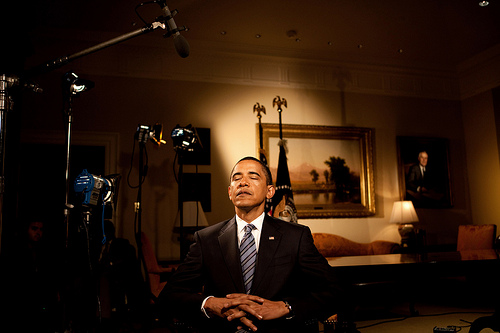
All photos except the last one were taken by Pete Souza. The last one was taken by Samantha Appleton. Fantastic work. I want your job!
A neat photo just released on the White House’s Flickr photostream:

From the description:
Seated from left: Defense Secretary Robert M. Gates, Treasury Secretary Timothy F. Geithner, Secretary of State Hillary Rodham Clinton and Attorney General Eric H. Holder, Jr.
Standing second row, from left: Agriculture Secretary Tom Vilsack, Energy Secretary Steven Chu, Homeland Security Secretary Janet Napolitano, White House Chief of Staff Rahm Emanuel, Health and Human Services Secretary Kathleen Sebelius, U.S. Trade Representative Ron Kirk, U.S. Permanent Representative to the United Nations Susan E. Rice, Veterans Affairs Secretary Eric K. Shinseki, and Education Secretary Arne Duncan.
Back row, from left: Transportation Secretary Ray LaHood, Environmental Protection Agency Administrator Lisa P. Jackson, Commerce Secretary Gary Locke, Labor Secretary Hilda L. Solis, Interior Secretary Ken Salazar, Housing and Urban Development Secretary Shaun Donovan, Office of Management and Budget Director Peter Orszag, and Council of Economic Advisers Chair Christina Romer. (Official White House Photo by Chuck Kennedy)
Ugh. More questionable news from the world of electronic voting machines. Kim Zetter at Wired is reporting Premier Election Solutions, Diebold’s voting machine division, is being sold to a competitor, Election Systems & Software (ES&S), but the sale may run into some trouble:
The sale gives ES&S, already the largest voting machine maker in the country, a near monopoly on the voting machine industry. According to the company’s website, its systems, used in 43 states, counted “approximately 50 percent of the votes in the last four major U.S. elections.”
Hart InterCivic, a voting machine firm based in Texas, filed an antitrust suit (.pdf) on Friday, seeking a temporary and permanent injunction against the sale. According to the suit, the sale “poses a significant and imminent threat of irreparable antitrust injury to plaintiffs.”
The sale also threatens harm to election districts that purchase voting equipment in that it will likely increase the costs of equipment and result in a decrease in the quality of products, the suit alleges. It will also, ultimately, cause “harm to the voters of the United States, in the form of loss of confidence in the integrity and security of the means by which elections are performed.”
Hah. “Loss of confidence in the integrity and security” of the voting system in this country? I already had no confidence. Zetter continues:
The suit alleges that Diebold and ES&S have long engaged in anti-competitive practices to win bids “through both legitimate and illegitimate acts and conduct.”
This behavior includes submitting low-ball bids to get contracts, after which the companies allegedly gouge customers with additional expenses for after-market service and upgrades. The suit alleges the companies also exaggerate the capabilities of their systems, misrepresent the status of their certification and exert improper and undue influence on government officials to win contracts.
The suit identifies ES&S as serving 45 percent of the country’s approximately 180,000 voting precincts. Premier serves approximately 23 percent; Sequoia Voting Systems serves 18 percent; Hart InterCivi serves 9 percent; and Dominion Voting Systems serves 5 percent.
Because of the anti-trust concerns, Senator Charles Schumer has asked the Justice Department to look into the sale. Wired reports Sen. Schumer saying
the deal raises anti-competitiveness concerns and has “adverse implications on how our country votes.”
I hope Sen. Schumer doesn’t stop at asking the Justice Department to investigate this sale of Premier. This is a start, but please, senator, let’s investigate the entire electronic-voting-machine industry and force them to adopt rigorous integrity and security standards. Is it too much to ask that we ensure our voting system actually works?
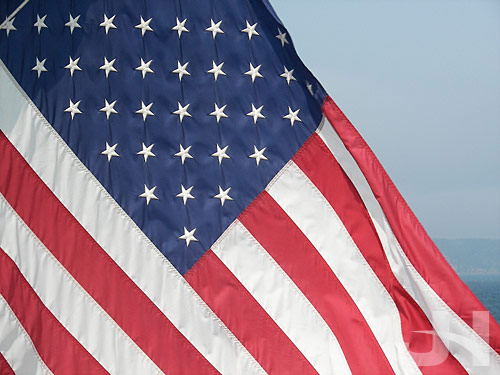
I remember where I was this morning eight years ago like it happened last week.
In 2001, I was a freshman at Mount Union College pursuing my undergrad degree. As I did most mornings, I was watching CNN before I went to class. On Tuesdays that semester, I had a religion class at 9:10am with Dr. David Torbett followed by my freshman-orientation class with Dr. Michael Myler at 10:35am.
On Tuesday 11 September 2009, at 8:46am when I saw the breaking news on CNN that a plane struck the World Trade Center, I remember being shocked that a plane flew into the building, but I remember not being startlingly alarmed by it. After all, I knew back in 1945, a plane flew into the Empire State Building, and things turned out alright for the building.
I left my dorm room shortly after 9am because I always tried to be punctual to my classes. On that September morning, however, had I left just a minute later, at 9:03am I would have watched the second plane sail into the other tower on live national television. Instead, I dutifully turned the television off and went to class. I would return to a world changed forever.
My religion class ran from 9:10am to 10:25am. The class went on as normal with none of us in the classroom knowing what was happening in the world outside. When the class was finished, a couple students from my second class came in and announced both the Twin Towers collapsed. I didn’t believe them. Soon after, Dr. Myler came in and confirmed. He canceled class and dismissed us.
The normally-a-couple-minutes walk back to my dorm room seemed to take excruciatingly long that morning as all I wanted to do was get back to my room and watch the news. I think the sun was shining and the weather was pleasant, but I can’t remember because I was so determined to get back to my dorm room. I remember walking back distraught, defiant, and in disbelief. Distraught because I had no idea what was going on, defiant because this doesn’t happen in the United States, and in disbelief because I couldn’t believe this just happened in the United States. But I didn’t yet know what “this” was.
Back in my dorm, I turned CNN back on realizing I never should have left just an hour and a half ago. I logged-on to CNN.com to find out more, but due to the mass influx of traffic, the site was down only to return later with a placeholder page of speculative reports and news.
My roommate and I usually kept our door shut, but that morning, everyone including us had their doors opened. People sharing rumors rushed in and out. I recall one person saying Camp David was also a target.
While watching the television stunned, I remember talking with my mom. She wanted to call and make sure I was okay.
The rest of the day was a blur of disbelief as I watched more, read more, and learned more. Those couple hours on the morning of 11 September 2001, though, are a point in my life I shall never forget.
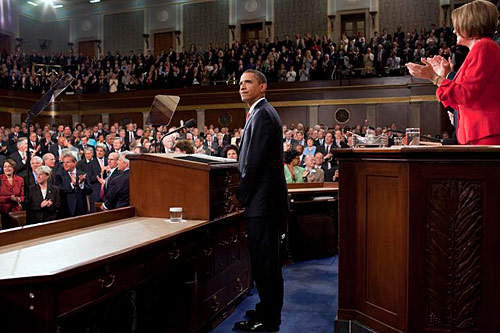
I went into President Obama’s Wednesday night national address with very high expectations. After watching the White House essentially sit back and watch the health care debate run away from them, I anticipated an effort by the president to start changing the debate. What I watched Wednesday night was exactly what I expected and was hoping for.
Obama’s address was both decisively strong and aggressively determined. I wrote last month about the differences between Candidate Obama, who seemed to always have the appropriate response at the appropriate time while his opponents ran around with their collective hair ablaze, and President Obama, who seemed to allow his administration’s collective hair to burn. I felt the Obama White House had not been aggressive and vocal enough with their argument in favor of health insurance reform. Well, on Wednesday, Candidate Obama must have had some words with President Obama, because both Obamas showed up for the address. We saw the passionate, rhetorically-superb campaign-trail Obama together with the calm, reasoned I’m-president-now Obama.
From the I-know-how-to-fire-up-a-crowd Candidate Obama:
Well, the time for bickering is over. The time for games has passed. (Applause.) Now is the season for action. Now is when we must bring the best ideas of both parties together, and show the American people that we can still do what we were sent here to do. Now is the time to deliver on health care. Now is the time to deliver on health care.
His address reminded me somewhat of his acceptance speech last summer in Denver: excellent rhetoric coupled with details and specifics. Anyone (read: me) who argued the president was too timid in his pitch for reform was silenced on Wednesday.
Obama skillfully positioned himself as a reasoned centrist. He made comments about and gestures toward the left and the right and talked about how his plan borrowed ideas from both (including two past rivals: Hillary Clinton and John McCain) and that it wasn’t, in fact, an enormous plot to “destroy” the system we have now:
Since health care represents one-sixth of our economy, I believe it makes more sense to build on what works and fix what doesn’t, rather than try to build an entirely new system from scratch.
This is what he outlined:
The plan I’m announcing tonight would meet three basic goals. It will provide more security and stability to those who have health insurance. It will provide insurance for those who don’t. And it will slow the growth of health care costs for our families, our businesses, and our government.
In the address, the president touched on a critical hurdle to reform: convincing those with coverage that reform is necessary:
But the problem that plagues the health care system is not just a problem for the uninsured. Those who do have insurance have never had less security and stability than they do today. More and more Americans worry that if you move, lose your job, or change your job, you’ll lose your health insurance too. More and more Americans pay their premiums, only to discover that their insurance company has dropped their coverage when they get sick, or won’t pay the full cost of care. It happens every day.
In his address, the president also fought-back against the unfounded lies being told about reform plans in perhaps his strongest language yet on the matter:
Some of people’s concerns have grown out of bogus claims spread by those whose only agenda is to kill reform at any cost. The best example is the claim made not just by radio and cable talk show hosts, but by prominent politicians, that we plan to set up panels of bureaucrats with the power to kill off senior citizens. Now, such a charge would be laughable if it weren’t so cynical and irresponsible. It is a lie, plain and simple.
In calling members of Congress to action, Obama said this:
I understand how difficult this health care debate has been. I know that many in this country are deeply skeptical that government is looking out for them. I understand that the politically safe move would be to kick the can further down the road to defer reform one more year, or one more election, or one more term.
But that is not what the moment calls for. That’s not what we came here to do. We did not come to fear the future. We came here to shape it. I still believe we can act even when it’s hard. (Applause.) I still believe I still believe that we can act when it’s hard. I still believe we can replace acrimony with civility, and gridlock with progress. I still believe we can do great things, and that here and now we will meet history’s test.
Because that’s who we are. That is our calling. That is our character.
Finally, he expanded on what I have always thought was the most important reason for reform: the moral case. The president invoked a letter he received posthumously from Senator Ted Kennedy:
“What we face,” he wrote, “is above all a moral issue; at stake are not just the details of policy, but fundamental principles of social justice and the character of our country.” […]
That large-heartedness that concern and regard for the plight of others-is not a partisan feeling. It’s not a Republican or a Democratic feeling. It, too, is part of the American character-our ability to stand in other people’s shoes; a recognition that we are all in this together, and when fortune turns against one of us, others are there to lend a helping hand; a belief that in this country, hard work and responsibility should be rewarded by some measure of security and fair play; and an acknowledgment that sometimes government has to step in to help deliver on that promise.
Obama gave strong and assertive speech Wednesday night, one that surely invigorated a stagnant and discouraged base. Now the hard work begins: making reform a reality.
(Photo: Official White House Photo by Pete Souza)
Our camera takes 1 exposure every 10 seconds, as we drive from San Francisco to Washington D.C.
(Nod: The Daily Dish)
Recently, FactCheck.org thoroughly debunked an anti-health-care-reform email that purported to detail frightening passages in H.R.3200 but only showcased, according to FactCheck.org, “evidence of a reading comprehension problem on the part of the author.” I’d love to get this email from someone so I can reply-all in the same manner I once replied to an Obama-is-a-Muslim email. The health-care email states:
A few highlights from the first 500 pages of the Healthcare bill in congress Contact your Representatives and let them know how you feel about this. We, as a country, cannot afford another 1000 page bill to go through congress without being read. Another 500 pages to go. I have highlighted a few of the items that are down right unconstitutional.
FactCheck.org notes:
The chain e-mail purports to give “a few highlights” from the first half of the bill, but the list of 48 assertions is filled with falsehoods, exaggerations and misinterpretations. We examined each of the e-mail’s claims, finding 26 of them to be false and 18 to be misleading, only partly true or half true. Only four are accurate.
Here are a few of their notes.
Claim: Page 29: Admission: your health care will be rationed!
False: This section says nothing whatsoever about “rationing” or anything of the sort. Actually, it’s favorable to families and individuals, placing an annual cap on what they could pay out of pocket if covered by a basic, “essential benefits package.” The limits would be $5,000 for an individual, $10,000 for a family.
Claim: Page 65: Taxpayers will subsidize all union retiree and community organizer health plans (read: SEIU, UAW and ACORN)
Misleading. Page 65 is the start of a section (SEC. 164. REINSURANCE PROGRAM FOR RETIREES) that would set up a new federal reinsurance plan to benefit retirees and spouses covered by any employer plan, not just those run by labor unions or nonprofit groups. Specifically, it covers “retirees and . . . spouses, surviving spouses and dependents of such retirees” who are covered by “employment-based plans” that provide health benefits. It’s open to any “group health benefits plan that . . . is maintained by one or more employers, former employers or employee associations,” as well as voluntary employees’ beneficiary associations (page 66). Furthermore, the aim of the fund is to cut premiums, copays and deductibles for the retirees. Payment “shall not be used to reduce the costs of an employer.”
Claim: Page 272: Cancer patients: welcome to the wonderful world of rationing!
False. This page merely calls for a study of whether a certain class of hospitals incur higher costs than some others for the cancer care they deliver. It also says the secretary of HHS “shall provide for an appropriate adjustment” in payments “to reflect those higher costs.” It’s hardly “rationing” to pay hospitals more to compensate for higher costs.
What should be a civilized discourse about health-care-policy and fiscal responsibility has turned into an absurd and organized crusade against health care reform. Being able to fight fear and lies with truth is essential. Let’s see what the president has to say tonight.
(Nod: The Daily Dish)